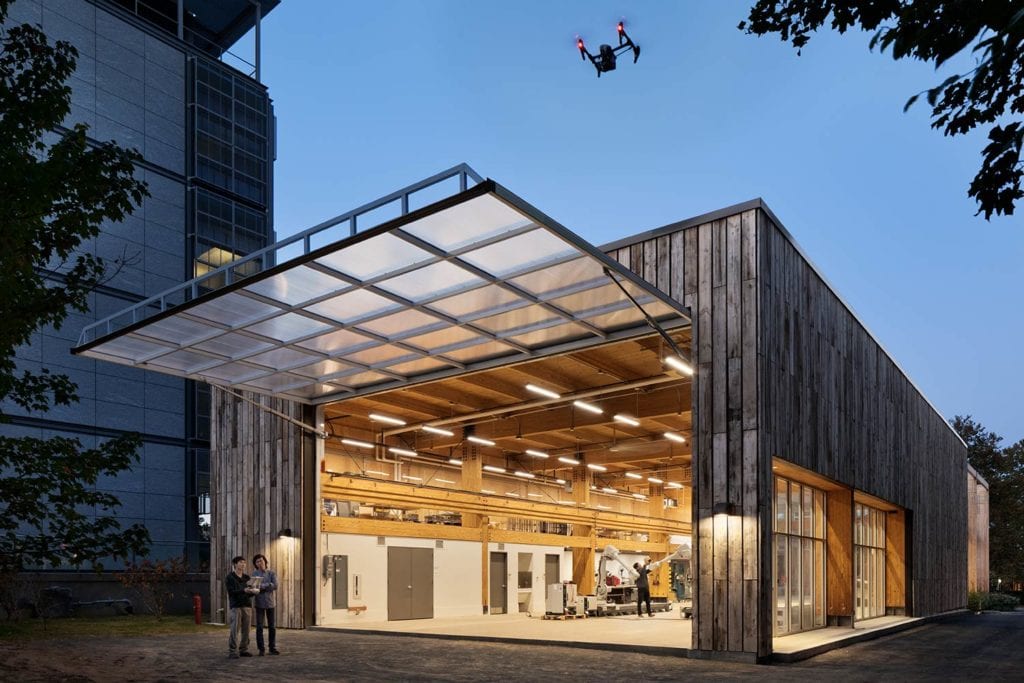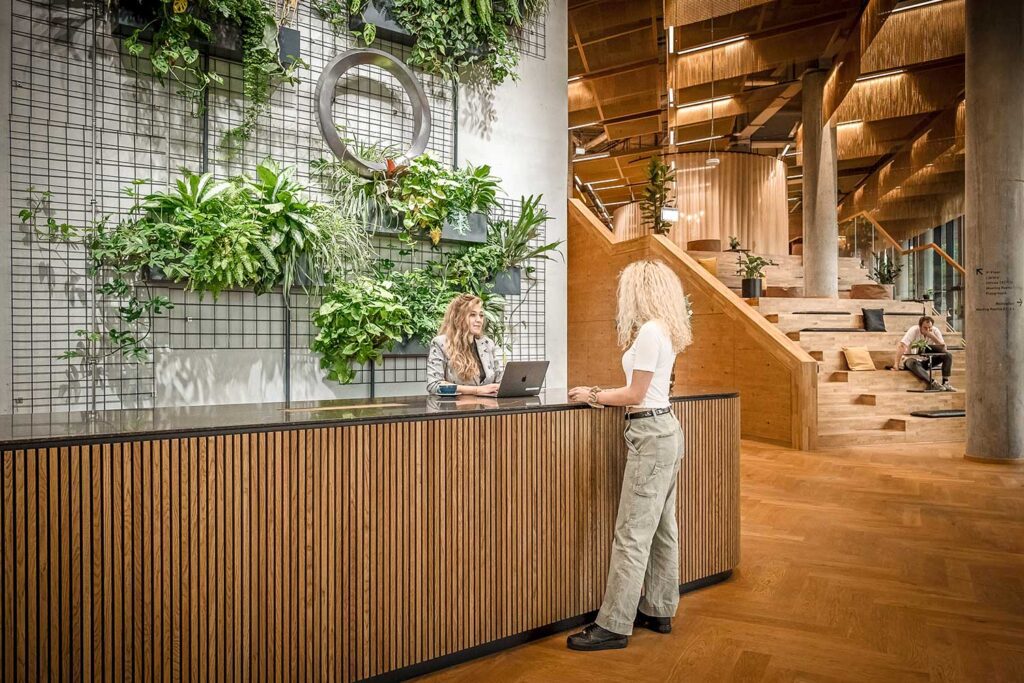Mass timber solutions for eight story mixed-use buildings: A comparative study of GHG emissions
Efforts to quantify and reduce greenhouse gas (GHG) emissions of the built environment often neglect embodied emissions, instead focusing on reducing emissions from building operations. Utilizing sustainably sourced mass timber offers low embodied carbon alternatives to traditional concrete and steel structural systems, however the variability in embodied carbon for different mass timber approaches remains understudied.
In this study, we used life cycle assessment (LCA) to compare the whole building embodied carbon of nine mass timber design options and two typical concrete and steel reference cases for an eight-story mixed-use building, ensuring structural, acoustic, thermal, programmatic, and fire-rating equivalence between the designs. The study found that the mass timber designs vary significantly, ranging between a 14-52% reduction in whole building embodied carbon from the most impactful reference case, and a 31-73% reduction when considering the structural systems alone. This study demonstrates the value that whole building LCA (WBLCA) provides as a primary driver for lowcarbon structural system design and architectural development of mass timber buildings, beyond that of single material comparisons using environmental product declarations (EPDs).
Introduction
Efforts to quantify and reduce greenhouse gas (GHG) emissions of buildings have often neglected embodied carbon emissions, instead focusing on reducing emissions from building operations. Unlike operational carbon emissions, however, a significant portion of embodied emissions are released during construction, before the building is even occupied. These impacts, also known as “upfront carbon” critically influence our near-term climate trajectory. As buildings become more efficient and generation grids get cleaner, thereby minimizing operational carbon, the embodied carbon of buildings makes up an increasing proportion of the life cycle emissions. Moreover, as we specify high performance heating and cooling systems, remaining operational carbon emissions are dominated by occupant plug loads and process energy which is more difficult to influence [1]. As a result, it is critical to find ways to reduce the embodied carbon of buildings alongside their operational footprint.
Mass timber construction has emerged within the embodied carbon conversation offering a promise of a lower embodied carbon alternative to traditional concrete and steel structural components and systems. While many benefits of mass timber have been explored (i.e. embodied carbon of structural systems [2], creating demand for sustainable forestry; creating carbon stocks for the lifetime of the building [3]; enabling a shorter construction timeline; offering marketing benefits to the building owner; and offering health and aesthetic benefits to the occupants [4]), a comprehensive quantification of the variability in embodied carbon for different mass timber structural use cases has not been sufficiently studied. More common in the literature is to use a single typical mass timber scenario, compare options that have not been engineered for equal structural design loads, or disregard requirements for fire and acoustics, making the findings less relevant to practitioners. This study instead examines the variability between functionally equivalent design options, which is essential for practitioners to understand the range of possibilities for using mass timber to support decarbonization goals.

Life cycle assessment (LCA) is a quantitative method for estimating the environmental impacts of a product or process over time [5]. When applied to buildings and construction, an LCA model tracks the emissions from material extraction or harvest, transportation, manufacturing or milling, maintenance and use, as well as projected emissions from end-of life practices like demolition, recycling and disposal [6]. This study reports the embodied carbon of all the design options in terms of Global Warming Potential (GWP) expressed in kgCO2e. This unit, while referencing carbon dioxide, accounts for all greenhouse gases that contribute to global warming by absorbing energy and trapping radiation in the atmosphere, including gases like methane and nitrous oxide in addition to CO2.

In this study, we use LCA to compare the whole building life cycle embodied carbon of nine mass timber designs and two reference designs for an eight story mixed-use building (ground floor retail with residential above). While the study did not seek to optimize the reference buildings, we acknowledge that these conventional structural solutions also have significant carbon reduction opportunities that are equally critical to supporting the near-term carbon goals in the construction industry.
This study demonstrates how embodied carbon, used here synonymously with global warming potential (GWP), can be a driver for structural system design and architectural development in all buildings, focusing here on the understudied variability within timber construction. Notably, the study shows how different mass timber structural systems fare in embodied carbon terms when holding program, structural loads, fire rating, acoustical performance, and envelope thermal criteria equivalent in all the options.
Link to the published feature here: Planning Post Carbon Cities: 35th PLEA Conference on Passive and Low Energy Architecture, A Coruña, 1st-3rd September 2020: Proceedings
You may also like
References
- Simonen, K. (2014). Life cycle assessment.
- CLF and Katerra. (2020). LCA of Katerra’s CLT and Catalyst Building.
- Churkina, G. Organschi, A. Reyer, C. Ruff, A. Vinke,K. Liu, Reck, B. Graedel, T.E. Schellnhuber, H.J. (2020). Buildings as a Global Carbon Sink. Nature Sustainability “Perspective”.
- Green, M. (2012). The Case for Tall Wood.
- International Organization for Standardization. ISO 14040:2006, ISO 14044:2006. (2016). Environmental management.
- European Committee for Standardisation. EN15978, (2011). Sustainability of construction works. Assessment of environmental performance of buildings.





